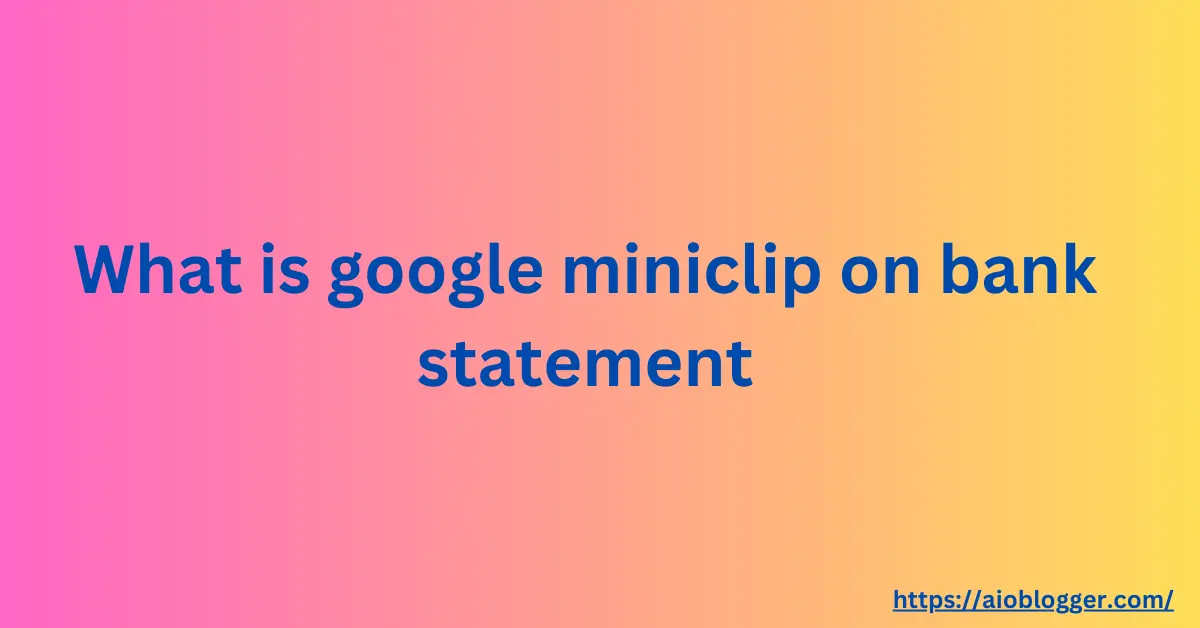What Is NWEDI?
NWEDI stands for Network Electronic Data Interchange. It’s a method used for exchanging business documents, such as purchase orders and invoices, electronically between trading partners. NWEDI streamlines the process of exchanging information, reducing manual effort and errors.
What Is NWEDI EDI PYMNTS?
NWEDI EDI PYMNTS refers to payments made through the NWEDI system using Electronic Data Interchange (EDI). EDI PYMNTS is a secure way of transferring funds between businesses electronically, often used for paying invoices and fulfilling financial transactions.
How Does the NWEDI Charge Appear?
NWEDI charges typically appear on your bank statement as “NWEDI” or “NWEDI EDI PYMNTS,” followed by a reference number or description indicating the transaction details. These charges represent electronic payments made or received through the NWEDI system.
How to Prevent NWEDI Charges From Appearing Again
Regularly Review Your Bank Statements: Check your bank statements regularly to identify any unfamiliar or unauthorized charges, including NWEDI transactions.
Keep Your Payment Information Secure: Safeguard your payment information to prevent unauthorized access and misuse.
Protect Your Personal and Account Information: Avoid sharing sensitive information such as passwords or account details with unauthorized individuals or websites.
Utilize Strong Passwords: Create strong and unique passwords for your online banking accounts to minimize the risk of unauthorized access.
Enable Transaction Notifications: Set up alerts or notifications for any transactions made on your account to promptly detect any suspicious activity, including NWEDI charges.
Exercise Caution With Electronic Interactions: Be cautious when providing payment information online and only use trusted websites and platforms for financial transactions.
Contact Your Bank: If you notice any unauthorized NWEDI charges on your bank statement, contact your bank immediately to report the issue and request further investigation.
Understanding Unknown NWEDI Bank Charges
How Do NWEDI Charges Show Up on Your Bank Statement?
NWEDI charges typically appear as electronic payments or transfers with the descriptor “NWEDI” or “NWEDI EDI PYMNTS,” followed by relevant details such as a reference number or transaction description.
Preventing More NWEDI Charges
To prevent further NWEDI charges, follow the aforementioned steps to secure your payment information, regularly monitor your bank statements, and promptly report any unauthorized activity to your bank.
Dealing With Unauthorized Charges
If you suspect unauthorized NWEDI charges on your bank statement, contact your bank immediately to report the issue. Your bank can assist you in investigating the charges and taking appropriate action to resolve the issue.
Benefits of EDI Payments
EDI payments offer several benefits, including:
-
- Faster transaction processing
-
- Reduced paperwork and manual effort
-
- Improved accuracy and efficiency in financial transactions
-
- Enhanced security measures for transferring sensitive information
When to Use EDI Payments
You can use EDI payments for various business transactions, including:
-
- Paying invoices to suppliers
-
- Receiving payments from customers
-
- Transferring funds between business accounts
Is an EDI Payment a Direct Deposit?
No, an EDI payment is not a direct deposit. Direct deposits typically refer to payments made directly into an individual’s bank account, such as salaries or benefits. EDI payments, on the other hand, involve electronic transfers of funds between businesses for commercial purposes.
What Does EDI Mean on My Bank Statement?
EDI on your bank statement stands for Electronic Data Interchange. It indicates that a transaction involving the electronic exchange of business documents has occurred between trading partners.
Why Did I Get an EDI Payment?
You may receive an EDI payment for various reasons, such as:
-
- Receiving payments from customers for goods or services
-
- Receiving refunds or reimbursements from suppliers
-
- Processing financial transactions between business entities
FAQs
EDI is commonly used by businesses across various industries to streamline the exchange of business documents and financial transactions with trading partners.
While implementing EDI may require initial setup and integration with existing systems, many businesses find it relatively straightforward with the assistance of EDI service providers or software solutions.
There are different types of EDI solutions available, including web-based platforms, integrated EDI software, and outsourced EDI services provided by third-party vendors. Choose the solution that best fits your business needs and budget.
CONCLUSION
In conclusion, understanding NWEDI charges on your bank statement involves recognizing electronic payments made through the Network Electronic Data Interchange system. By taking proactive measures to secure your payment information and monitoring your bank statements regularly, you can prevent unauthorized charges and ensure the security of your financial transactions.



